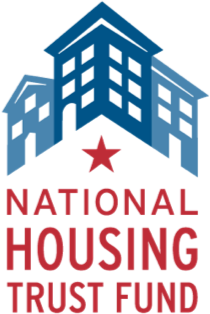-
State Data Overview
Across Oklahoma, there is a shortage of rental homes affordable and available to extremely low income households (ELI), whose incomes are at or below the poverty guideline or 30% of their area median income (AMI). Many of these households are severely cost burdened, spending more than half of their income on housing. Severely cost burdened poor households are more likely than other renters to sacrifice other necessities like healthy food and healthcare to pay the rent, and to experience unstable housing situations like evictions.
KeyFacts133,048Or25%Renter households that are extremely low income-77,344Shortage of rental homes affordable and available for extremely low income renters$27,750Average income limit for 4-person extremely low income household$41,407Annual household income needed to afford a two-bedroom rental home at HUD's Fair Market Rent.71%Percent of extremely low income renter households with severe cost burden -
State Level PartnersState Partners
Oklahoma Coalition for Affordable Housing
P.O. Box 58
Oklahoma City, OK 73101
affordablehousingcoalition.org
Andrea Flowers-Householter, Coalition Manager
Become an NLIHC State Partner
NLIHC’s affiliation with our state coalition partners is central to our advocacy efforts. Although our partners' involvement varies, they are all housing and homeless advocacy organizations engaged at the state and federal level. Many are traditional coalitions with a range of members; others are local organizations that serve more informally as NLIHC's point of contact.
Inquire about becoming a state partner by contacting [email protected]

-
Housing Trust FundHTF Implementation Information
NLIHC continues working with leaders in each state and the District of Columbia who will mobilize advocates in support of HTF allocation plans that benefit ELI renters to the greatest extent possible. Please contact the point person coordinating with NLIHC in your state (below) to find out about the public participation process and how you can be involved. Email Brooke Schipporeit with any questions.
 Current Year HTF Allocation
Current Year HTF Allocation$5,907,079
HTF State Resources2020
Draft HTF Application Packet (PDF)
2019
2019 HTF Application Package (PDF)
HTF awards (PDF)
2018
2018-NHTF-Awards (PDF)
2018 HTF Application Package (PDF)
Annual Action Plan, HTF Allocation Plan on page 230 (PDF)
HTF awards (PDF)
2017
NHTF-2017-awards (PDF)
2017 Draft HTF Allocation Plan {Appendix E of draft 2017 ConPlan Action Plan} (PDF)
Notice of Informal Public Input Sessions for Action Plan (PDF)
Notice of availability of 2017 HTF Application (PDF)
2017 HTF Application (PDF)
2016
2016-NHTF-awards (PDF)
OHFA Announces 2016 HTF Awards (PDF)
2016 HTF Awards (PDF)
HUD-approved HTF Allocation Plan (PDF)
Draft HTF Application by Oklahoma Housing Finance Agency (PDF)
NLIHC Point Person for HTF AdvocacyState Designated Entity:Official Directly Involved with HTF Implementation:Danette Carr
Allocation Supervisor
Timothy Hicks
Housing Development Allocation Analyst
405-419-8269
State Entity Webpage
Oklahoma Housing Finance Agency
NHTF-specific pages
-
ResourcesResources
Housing Profiles
State Housing Profile
State Housing Profile: Oklahoma (PDF) (JPG)
Congressional District Housing Profile
Congressional District Profile: Oklahoma (PDF)
Research and Data
National Housing Preservation Database
The National Housing Preservation Database is an address-level inventory of federally assisted rental housing in the United States.
Out of Reach: The High Cost of Housing
Out of Reach documents the gap between renters’ wages and the cost of rental housing. In Oklahoma and Nationwide
The Gap: A Shortage of Affordable Rental Homes
The Gap represents data on the affordable housing supply and housing cost burdens at the national, state, and metropolitan levels. In Oklahoma and Nationwide
Other Links -
Take Action
-
COVID-19 ResourcesCOVID-19 Resources
Rental Assistance
NLIHC has estimated a need for no less than $100 billion in emergency rental assistance and broke down the need and cost for each state (download Excel spreadsheet).
In response to COVID-19 and its economic fallout, many cities and states are creating or expanding rental assistance programs to support individuals and families impacted by the pandemic, and NLIHC is tracking in-depth information on these programs.
You can use the interactive map and searchable database to find state and local emergency rental assistance programs near you. You can also see the latest news on rental assistance programs through the state-by-state news tracker. Note that this is not a comprehensive list of all rental assistance programs as we continue to update frequently. If you are aware of a program not included in our database, please contact [email protected].
Shelter Closings
Across the country, homeless service providers are struggling to respond to the COVID-19 pandemic. In order to follow public health guidelines and help ensure people’s safety, some shelters are being forced to reduce services, restrict admittance, or close entirely. The loss of these critical resources puts people experiencing homelessness at even higher risk of illness. Check NLIHC's cumulative list of shelter closings.
Below is a list of shelters that have had to majorly alter services or completely close:
No information at this time.
State and Local News
The Housing Authority of the Cherokee Nation extended its rental assistance program in Oklahoma to Cherokee citizens who live in Arkansas and Kansas.
Updated on October 13, 2021
While evictions have resumed in Oklahoma, there is still financial help available for tenants struggling to pay their rent and utilities. As of mid-September, Community Cares Partners has spent $61,000,000 for rent and utility assistance.
Updated on October 5, 2021
The Journal Record reports a nonprofit organization that Oklahoma contracted to distribute the majority of the state’s federal emergency rental assistance (ERA) funds has a backlog of 13,000 requests for aid, prompting the program to close applications for the next six weeks. Of the nearly $310 million in federal ERA funds, only 17.4% have been distributed. Restore Hope Ministries, which serves a 20-county region and is partnering with the city of Tulsa and Tulsa County, says about 9,000-10,000 applications are awaiting approval.
The Tulsa Landlord-Tenant Resource Center is now offering on-site ERA application stations for landlords. At these stations, tenants can get help completing an application, upload required documents, ask questions about a pending application, and receive information about tenants rights/responsibilities.
Updated on September 14, 2021
According to data from the Oklahoma Policy Institute, 73% more evictions were filed in Tulsa in early August compared to early July, and more than double the number of evictions filed from early June. Legal aid attorneys are seeing a dramatic rise in Tulsa landlords using loopholes, such as lease terminations or alleged lease violations, to evict tenants.
Tulsa’s Landlord-Tenant Resource Center and Tulsa County District Courts are collaborating to provide eviction prevention information to individuals as they begin the court process.
Updated on August 30, 2021
Thousands of Oklahomans will be at risk for eviction with the expiration of the federal eviction moratorium. According to Open Justice Oklahoma, of the 37,640 evictions filed in Oklahoma since the pandemic began, 15,262 were granted as of July 21. Nearly 29% of those were in Tulsa County.
Updated on August 3, 2021
Tulsa’s biggest rental assistance provider, Restore Hope Ministries, has distributed more than $3.9 million to tenants since the pandemic began. Officials are finalizing plans to increase rental assistance by 1000% in 2021 to avoid a massive wave of evictions when the eviction moratorium is lifted.
Updated on March 08, 2021
An Oklahoma House committee approved a bill on February 10 that would prevent courts from halting evictions, even during a health emergency like the COVID-19 pandemic. House Bill 1564 says courts have no discretion to extend the terms of a lease. Several supporters of HB1564 on the House Business and Commerce Committee said that anyone who needed rental assistance was able to apply for it. Housing Solutions Executive Director Becky Gligo, however, says thousands of tenants applied for millions of dollars in rental assistance late last year, but there were instances where landlords rejected the funds or took it and then evicted tenants anyway.
Updated on February 17, 2021
The Oklahoman discusses the recent extension of the federal eviction moratorium through March 2021. According to Open Justice Oklahoma, more than 7,200 evictions have been filed in Oklahoma County since the onset of the pandemic, with about 2,000 evictions granted. Oklahoma County recently submitted a request to receive an allocation of the $25 billion emergency rental assistance program established by Congress in December.
Updated on February 01, 2021
Tulsa World reports on eviction data indicating that anti-eviction efforts might be assisting middle-class renters more than tenants in Tulsa’s lowest-income neighborhoods. Officials are concerned about a tsunami of evictions that could hit Tulsa in the new year.
Updated on November 30, 2020
Katie Dilks, executive director of the Oklahoma Access to Justice Foundation, describes Tulsa’s eviction crisis as the city’s “silent public health crisis.” Dilks discusses the CDC eviction moratorium and Tulsa County’s CARES Act-funded rental assistance program.
Updated on November 4, 2020
The Oklahoma Policy Institute reports that nearly half of adults in Oklahoma believe they are likely to be evicted or foreclosed upon in the next two months. Data show that eviction filings and orders have increased in Oklahoma even after the CDC moratorium took effect on September 4, and residents remain at risk for eviction through the end of the year.
Updated on October 26, 2020
The Associated Press reports Oklahoma lawmakers are facing pressure from housing and tenants’ rights advocates to reform the state’s eviction laws. 500,000 Oklahomans could face eviction due to high unemployment and other economic consequences from the pandemic.
Big If True, a news nonprofit organization based in Oklahoma City, reports on transparency concerns related to Oklahoma’s closed eviction hearings. An episode of the organization’s Hard Reset podcast discusses advocates’ concerns that many renters are unaware of the CDC eviction moratorium.
Updated on October 14, 2020
The Oklahoman reports that rental assistance and input from Legal Aid have been effective in keeping renters housed during the pandemic. As of September 15, Community CARES Partners had served nearly 400 individuals and provided more than $1 million in housing assistance. Hundreds of evictions still occur each week, thousands are reaching out for assistance, and services for people experiencing homelessness are in high demand.
Updated on October 5, 2020
The Tulsa Housing Authority launched a $20 million Emergency Rental Assistance Program, funded through the CARES Act, in late August. More than 4,400 Tulsa households have applied for more than $6.7 million in rent assistance.
Updated on September 22, 2020
According to the Legal Aid Services of Oklahoma, there could be 130,000 evictions in the state if Congress does not provide additional resources and protections.
Updated on August 25, 2020.
In response to the coronavirus pandemic, the City of Norman, OK paused terminations on delinquent water, sewer and trash utility accounts in May. Beginning this week, terminations will resume on accounts that have not paid per the city’s policy for collection. Support for rental and utility assistance is available through the city.
Updated on August 11, 2020.
On June 19, Oklahoma Governor Kevin Stitt announced that the state is allocating $10 million in Coronavirus Relief Funds toward an Eviction Mitigation grant program. The Eviction Mitigation program will reimburse organizations paying landlords for rental assistance to households impacted by COVID-19. The program will be administered through local non-profits.
Updated on June 29, 2020.
Tulsa County
Marketplace examines Tulsa’s eviction crisis that had existed even before the pandemic. The Tulsa County courthouse reopened on June 1, with more than 1,200 eviction cases pending.
Updated on June 29, 2020.
Eviction Update
Federal, state, and local eviction moratoriums are rapidly expiring and the CARES Act supplemental unemployment benefits will end soon; at that time, millions of low-income renters will be at risk of losing their homes. The NLIHC estimates at least $100 billion in emergency rental assistance is needed to keep low-income renters stably housed during and after the pandemic. This tracker links to news reports of the growing evictions crisis in various cities and states. Check NLIHC's cumulative list of eviction updates.
The Oklahoma County Court Clerk says there are 91 eviction cases on its dockets for Monday the day after the eviction moratorium ends. It is usually limited to 75 per day. Advocates fear 130,000 potential evictions in Oklahoma if additional supports are not made available.
Updated: August 28
No statewide order was issued, but the State Supreme Court paused most hearings until May 15. The State Supreme Court has stated the over 1500 eviction orders issued between March 16 and May 15 are valid and enforceable. Eviction hearings are being conducted remotely.
Updated: July 31
In the third week of July, 31% of adults in Oklahoma reported they had missed their previous housing payment or had little confidence they would make their next one on time, according to a weekly survey conducted by the Census. In the same survey, 146,263 renters reported they had not paid their previous rental payment.
Updated: July 29
According to a weekly survey by the Census, 1 in 4 adults in the state either missed their last housing payment or have little/no confidence of being able to make next month’s housing payment. Oklahoma never instituted a statewide moratorium.
Tulsa County The Tulsa County Courthouse reopened for hearings on June 1 with more than 1,200 cases pending.
June 19 Updated: July 16
COVID-19 Resources OtherNational Media
What to Know About Housing and Rent During the COVID-19 Emergency? https://tinyurl.com/y74ox85d
Arbor Realty Trust launched an innovative $2 million rental assistance program to help thousands of tenants and families significantly impacted by the COVID-19 outbreak. Arbor is contributing $1 million to the program and participating borrowers will match Arbor's advances to its tenants in need to help fill the rent gap during the hard-hit months of May and June. Together, the partnership program will provide $2 million in relief. https://tinyurl.com/y9r6x9vb

